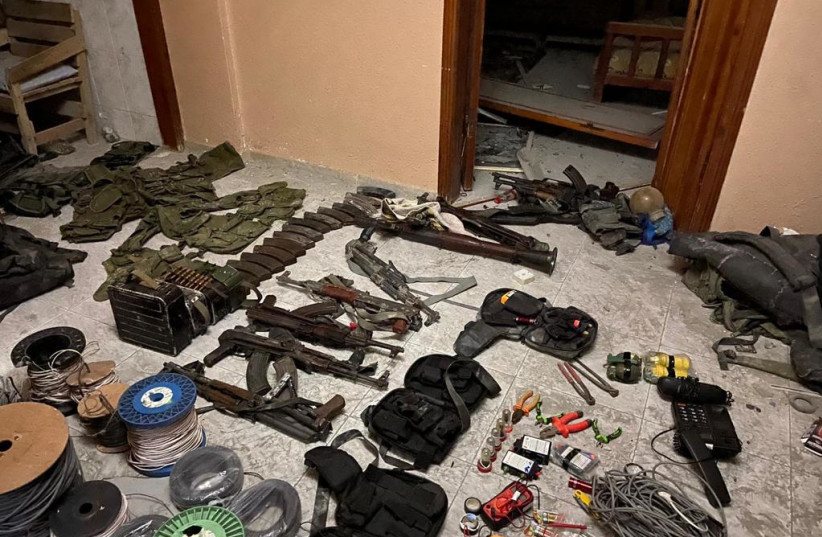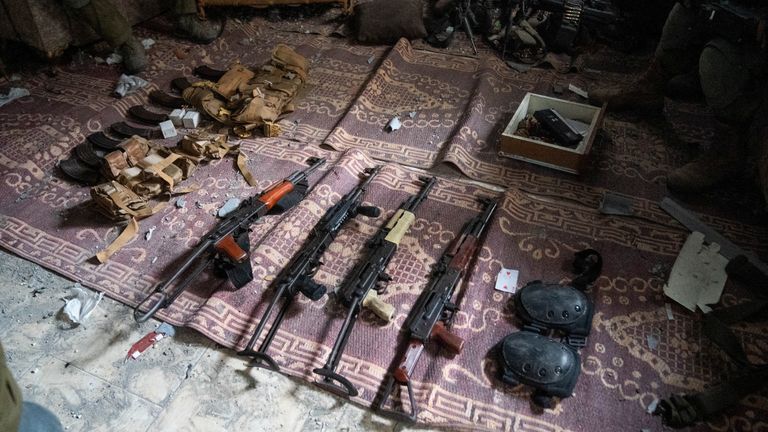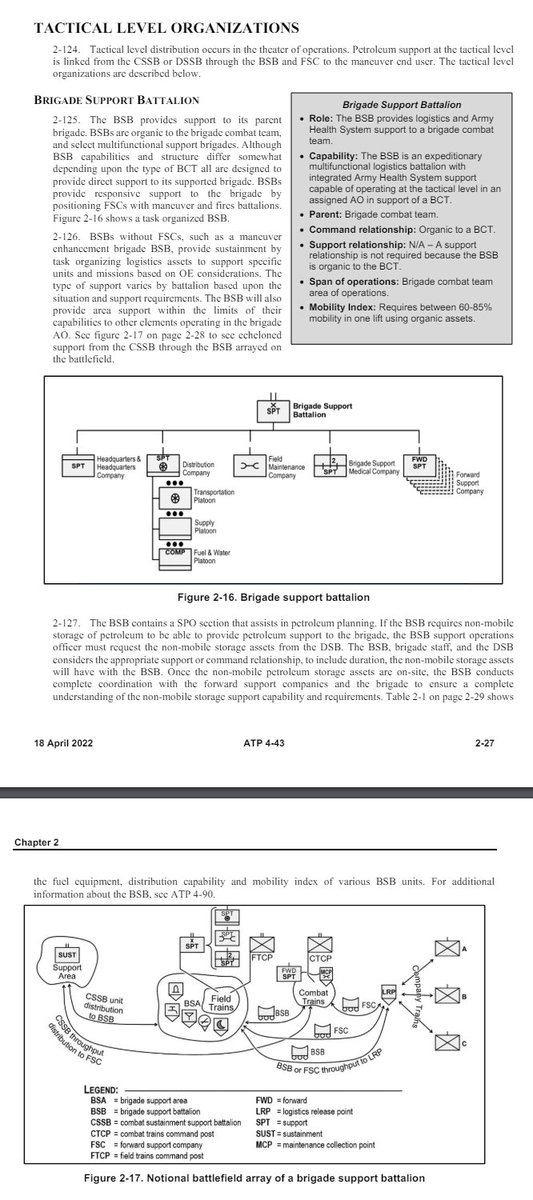A quick Israel-Gaza War thread on why dismantling Hamas as a military organization is quite hard, if not impossible, inspired by questions from @Charlie533080
This is an overly simplified illustration of the force structure of a Hamas battalion derived from reports as well as videos/imagery produced by the IDF, Hamas and others. Each green dot is a individual fighter, the blue boxes denote "tangible combat assets/kit", hypothetically located in fixed locations. Yellow rings around green circles denote individuals in leadership roles (who are presumably institutionally promotable).
Caveat emptor, the only organizations that actually have access to Hamas' Tables of Organization and Equipment (TOEs) are Hamas and the IRGC (maybe). The IDF and US IC can see fragments of it, but not the whole picture, so this thread is speaking purely in broad brushstrokes.
This is an overly simplified illustration of the force structure of a Hamas battalion derived from reports as well as videos/imagery produced by the IDF, Hamas and others. Each green dot is a individual fighter, the blue boxes denote "tangible combat assets/kit", hypothetically located in fixed locations. Yellow rings around green circles denote individuals in leadership roles (who are presumably institutionally promotable).
Caveat emptor, the only organizations that actually have access to Hamas' Tables of Organization and Equipment (TOEs) are Hamas and the IRGC (maybe). The IDF and US IC can see fragments of it, but not the whole picture, so this thread is speaking purely in broad brushstrokes.

First and foremost, unlike in most highly bureaucratized militaries, Hamas (and it appears most of Gaza's other militant orgs) devolve a massively outsized share of both their organizational logistical responsibilities and their combat power down to the "cell" level.
Think of their cells as being akin to Western-style fireteams with a handful of guys (a quick aside, Hamas 'does' have a formal rank/structure hierarchy - i.e. cells → to squads → to platoons → companies → brigades). There are multiple cells in a squad (so the above graphic really should have 2 or 3 of the blue blocks per squad).
Every cell is supposed to maintain/have a semi-standardized allotment of kit. The most shoddily equipped units have a mixture of RPGs and AKs, but some (well... most apparently) cells have better/more niche equipment, e.g. EFPs and ballistic protection. There are also specialized anti-tank and sniper teams, but I haven't seen any footage of their caches being pinched.

Think of their cells as being akin to Western-style fireteams with a handful of guys (a quick aside, Hamas 'does' have a formal rank/structure hierarchy - i.e. cells → to squads → to platoons → companies → brigades). There are multiple cells in a squad (so the above graphic really should have 2 or 3 of the blue blocks per squad).
Every cell is supposed to maintain/have a semi-standardized allotment of kit. The most shoddily equipped units have a mixture of RPGs and AKs, but some (well... most apparently) cells have better/more niche equipment, e.g. EFPs and ballistic protection. There are also specialized anti-tank and sniper teams, but I haven't seen any footage of their caches being pinched.


Higher-up in the hierarchy, there appear to be more caches (with more munitions evidently) allotted to every platoon and company, some with specialty equipment.
'I' tend to estimate the organizational level of a cache by the number of assault rifles that are found. 5 to 10+ (usually found at sensitive above-ground locations like schools) probably denote the main haunts of a given company or battalion 'in peacetime.'
'I' tend to estimate the organizational level of a cache by the number of assault rifles that are found. 5 to 10+ (usually found at sensitive above-ground locations like schools) probably denote the main haunts of a given company or battalion 'in peacetime.'
https://twitter.com/EFischberger/status/1738980714731679952
All of this is very unlike modern conventional militaries, which tend to push responsibility for sustaining maneuver units (for the most part, and at least nominally) to designated logistics/maintenance units.
I.e. if you're an American soldier who needs a rifle, you go to your company or battalion level armorer, and they issue you one that you have to give back when you're not using it. Or if you're deployed abroad in a combat zone, you'll have your rifle, but you're not expected to lug around more than a combat-load, and if you need more bullets you have to go see a quartermaster.
DoD specifically operates what's known as a "pull" logistics system, and its important to point out that the resources required to sustain heavier militaries "flow" downwards through DoD's organizational hierarchy.
apps.dtic.mil/sti/pdfs/AD108…
armypubs.army.mil/epubs/DR_pubs/…
apps.dtic.mil/sti/tr/pdf/AD1…

I.e. if you're an American soldier who needs a rifle, you go to your company or battalion level armorer, and they issue you one that you have to give back when you're not using it. Or if you're deployed abroad in a combat zone, you'll have your rifle, but you're not expected to lug around more than a combat-load, and if you need more bullets you have to go see a quartermaster.
DoD specifically operates what's known as a "pull" logistics system, and its important to point out that the resources required to sustain heavier militaries "flow" downwards through DoD's organizational hierarchy.
apps.dtic.mil/sti/pdfs/AD108…
armypubs.army.mil/epubs/DR_pubs/…
apps.dtic.mil/sti/tr/pdf/AD1…


And here's where it's important, well... vital to point out that conventional militaries tend to have few and large logistics hubs that are inextricably tied to whichever unit they're a part of.
If say, a single armored battalion were ordered to "attack westwards until you're ordered to stop", they won't get very far unless a separate company of troops driving fuel and water tankers (allocated from the Brigade-level) are ordered to follow behind them in relatively close order.
If say, a single armored battalion were ordered to "attack westwards until you're ordered to stop", they won't get very far unless a separate company of troops driving fuel and water tankers (allocated from the Brigade-level) are ordered to follow behind them in relatively close order.
And that all brings us back to Hamas.
Let's set aside for the moment that the above graphic downplays the number of caches per Hamas battalion by a factor of between 6 and 9 (unintentional nice), and that most of these caches have already either been moved underground or are currently in use, there are roughly 30 Hamas battalions (not including the other Gazan militant orgs which have evidently copied Hamas' force structure).
Hamas' military is fundamentally a devolved hierarchy with a bottom-heavy logistical structure. That is to say, their units are specifically designed to operate in a semi-autonomous fashion, as opposed to functioning in larger cohesive units.
Suffice it to say, that likely means a lot of weird things from the perspective of folk who are most familiar with the Western military canon.
Let's set aside for the moment that the above graphic downplays the number of caches per Hamas battalion by a factor of between 6 and 9 (unintentional nice), and that most of these caches have already either been moved underground or are currently in use, there are roughly 30 Hamas battalions (not including the other Gazan militant orgs which have evidently copied Hamas' force structure).
Hamas' military is fundamentally a devolved hierarchy with a bottom-heavy logistical structure. That is to say, their units are specifically designed to operate in a semi-autonomous fashion, as opposed to functioning in larger cohesive units.
Suffice it to say, that likely means a lot of weird things from the perspective of folk who are most familiar with the Western military canon.
Think of it like this, when you destroy a Western-standard rifle company's local supply depot, regardless of where they are or what they're doing, they'll probably be out of the fight after a few hours of sustained combat.
In a larger hot war, if you destroy a battalion's command structure, it's quite likely that they'll be able to do "battalion things" until their leadership is replaced (either from above or below).
With organizations like Hamas, because they're not necessarily functioning as discrete units like most Westerners are accustomed to, neutralizing their battalion echelon and above leaders or blowing up their larger supply hubs, does not in and of itself render their units incapable of fighting or "destroy them."
That's why, as @2023gazawar has scrupulously documented, reports of the "destruction" of Hamas battalions/brigades are usually dramatically overstated.
In a larger hot war, if you destroy a battalion's command structure, it's quite likely that they'll be able to do "battalion things" until their leadership is replaced (either from above or below).
With organizations like Hamas, because they're not necessarily functioning as discrete units like most Westerners are accustomed to, neutralizing their battalion echelon and above leaders or blowing up their larger supply hubs, does not in and of itself render their units incapable of fighting or "destroy them."
That's why, as @2023gazawar has scrupulously documented, reports of the "destruction" of Hamas battalions/brigades are usually dramatically overstated.
• • •
Missing some Tweet in this thread? You can try to
force a refresh






